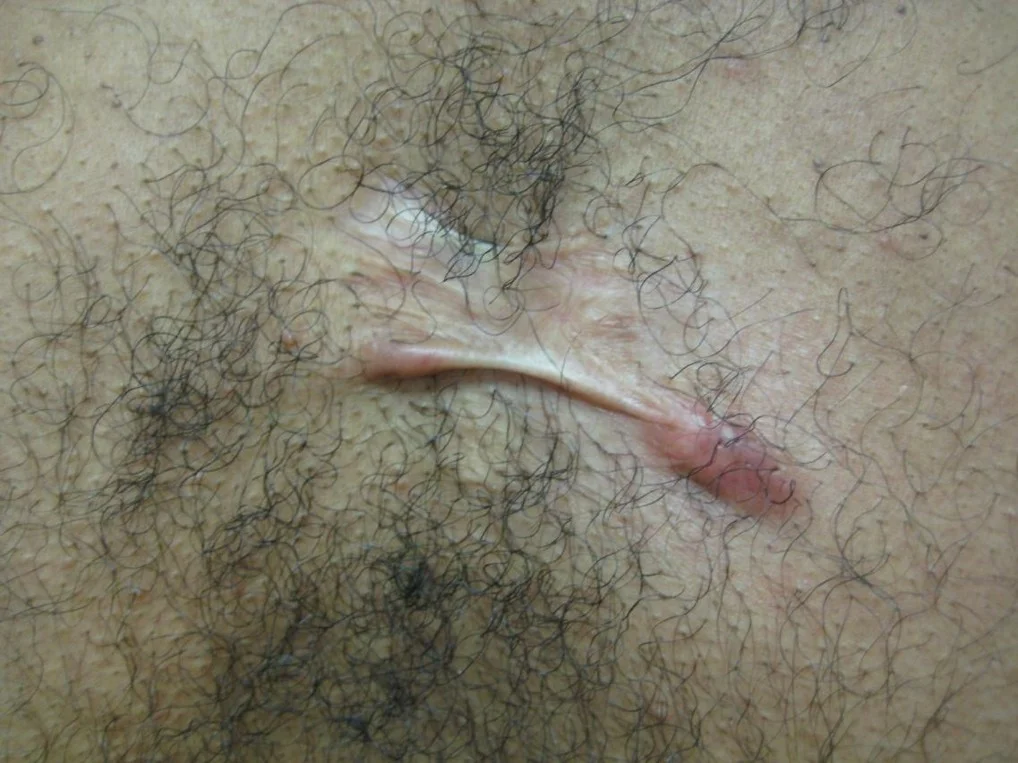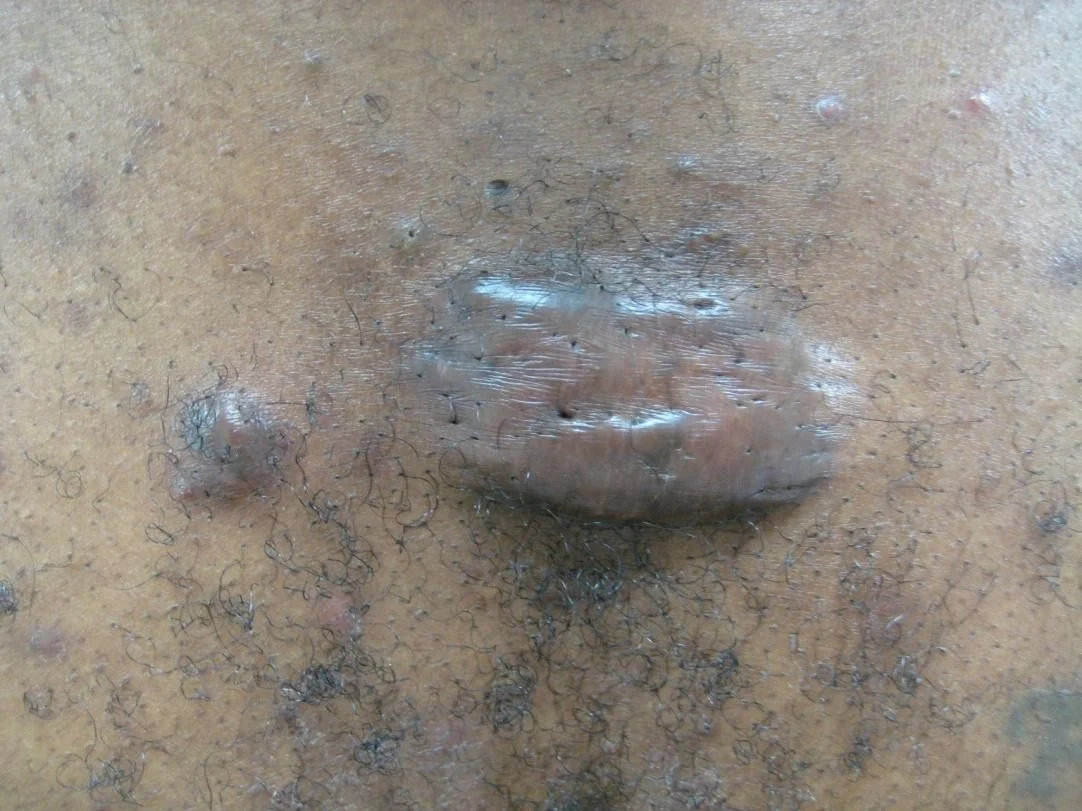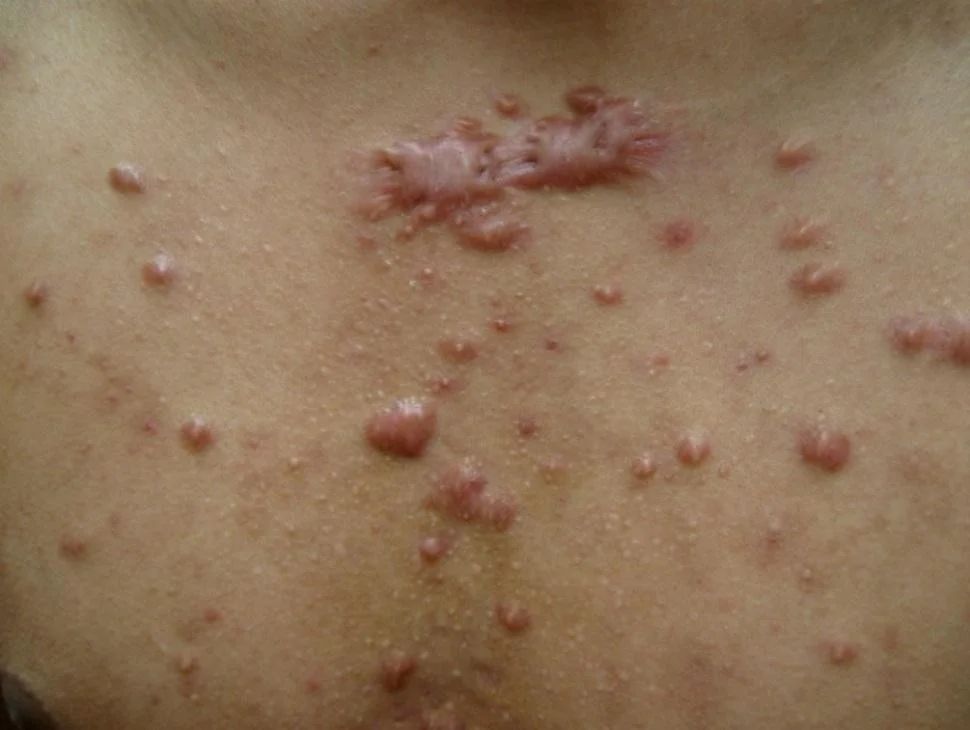Case Four
A healthy 24-year-old African American male presents with an itchy, firm growth on the earlobe, which arose (gradually increasing in size) over several months after an ear piercing

Keloids
- Keloid result of abnormal wound healing leading to overgrowth of scar tissue beyond the original scar site
- More common on upper trunk and earlobes
- Genetic influence (most common in African-Americans) plus with some form of skin injury


Clinical features
- Color can vary from pink-purple (early lesions) to skin-colored to hypo- or hyperpigmented
- Can be itchy or tender
- Do not regress spontaneously
- Can be cosmetically disfiguring

Treatment of keloids
- Keloids are difficult to treat surgically, with a high recurrence rate
- No single, reliably efficacious therapy available
- Non-essential cosmetic surgery should be avoided in patients predisposed to developing keloids
- Intralesional corticosteroid injection has been the mainstay of treatment for keloids
- Most commonly used is triamcinolone acetonide in concentrations of 10- 40 mg/mL at 4- to 6- week intervals